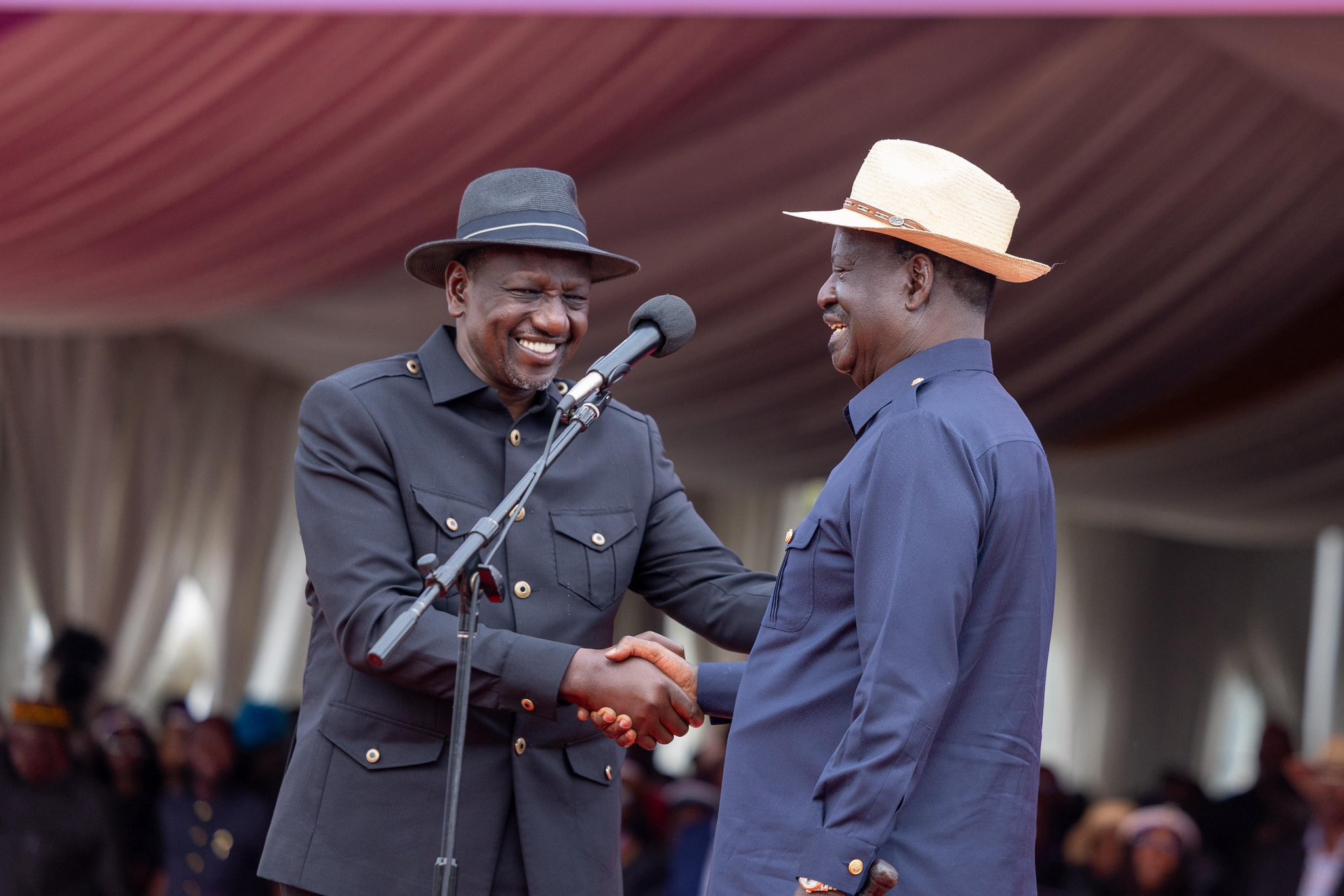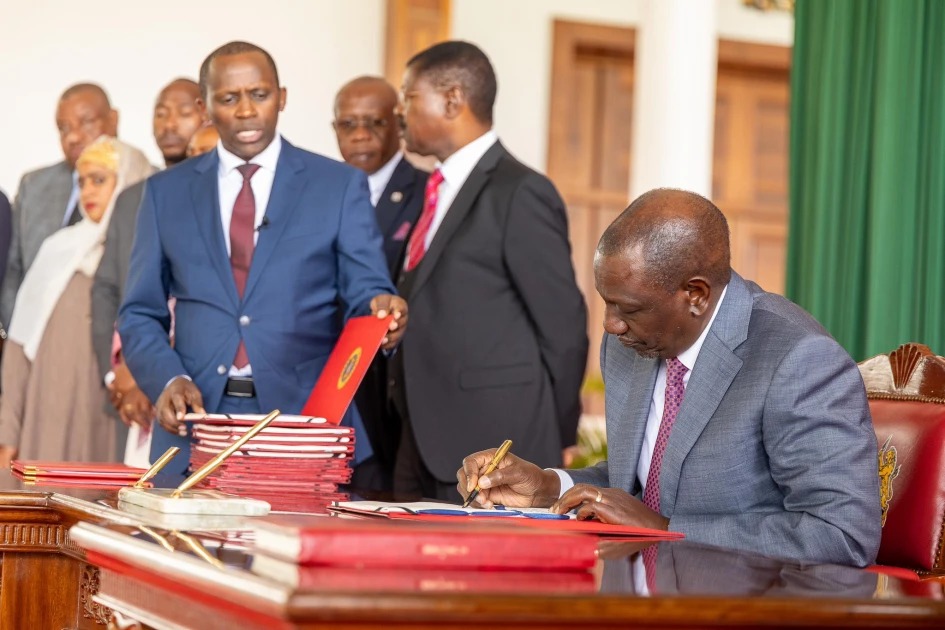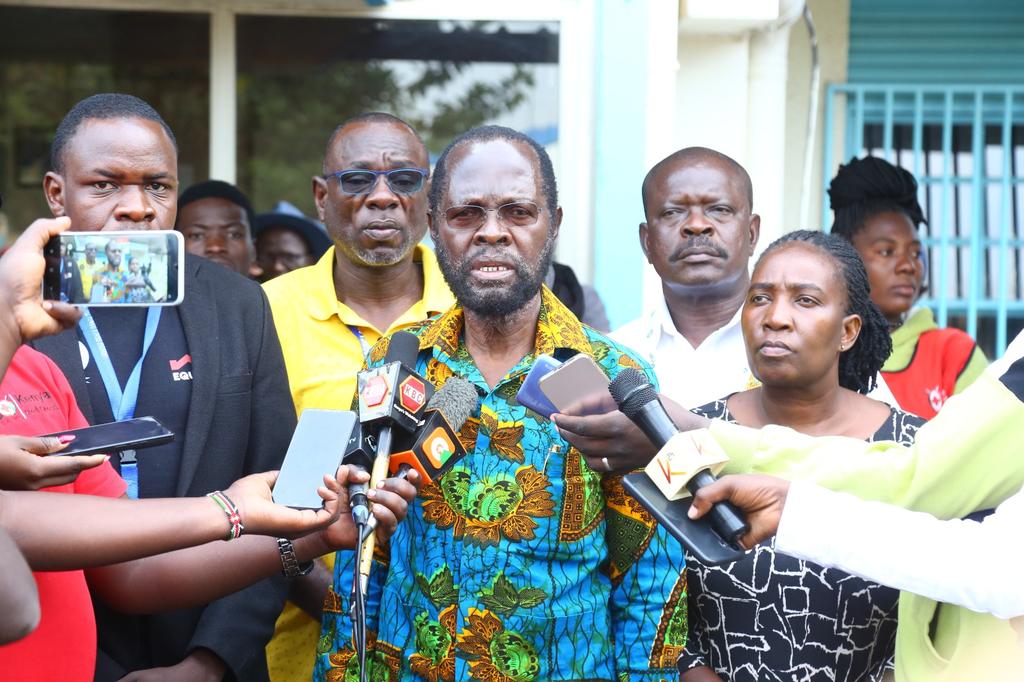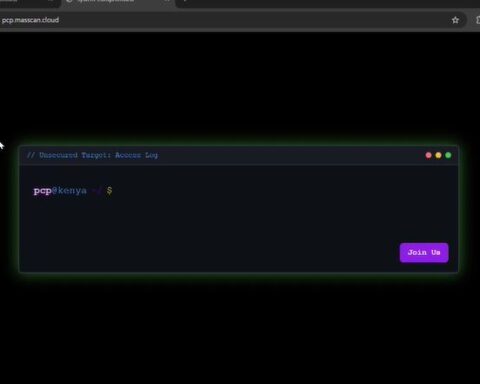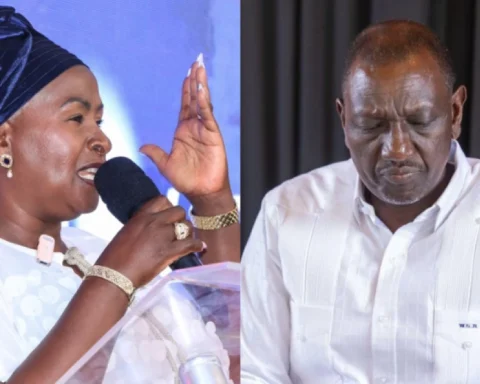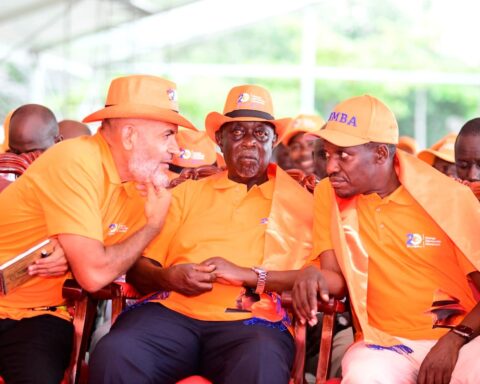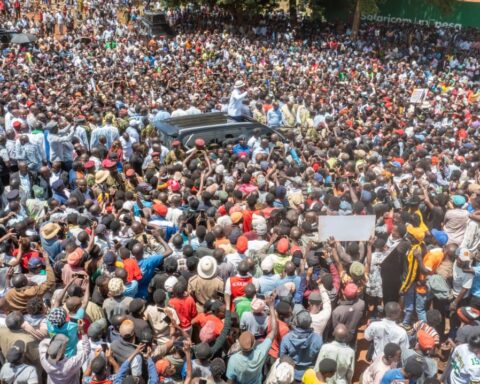Raila: Compensation for protest victims will be backdated to 2017
“There is compelling national interest in establishing a framework for accountability, redress and reparations for victims of demonstrations and public protests,” President William Ruto said while announcing the establishment.
Raila Odinga who worked with the president to set up the compensation framework expressed his gratitude regarding the announcement of a concrete plan to address the concerns of Kenyans who need and deserve compensation to move on with their lives and businesses.
“We have sat together and reviewed the MOU that we signed this year. You have seen we have put together a framework to ensure that the MOU is implemented to the letter,” he said.
He stated that the victims of past political violence, including those who were injured, maimed, or killed, would be duly compensated, with the coverage period not restricted to 2022 alone.
“We are not just looking at 2024, or 2023, or 2022. We go back to 2017 up to date,” he stated.
“The families are going to be compensated, and we are putting in place the necessary mechanisms to make that happen.”
Raila also revealed plans for a joint parliamentary group meeting next week.
The meeting, he revealed, is aimed at rallying lawmakers from both sides to put up the legislative and institutional structures needed to support the implementation.
“This is going to happen,” he declared, adding, “To the naysayers, give us the space to deliver on this.”
The initiative, unveiled through a presidential proclamation, will provide reparations for civilians and security personnel who suffered bodily harm or lost their lives during protests and riots.
The new framework will operate under the Executive Office of the President and will be implemented in collaboration with the Office of the Attorney General, the Ministry of Interior and National Administration, the National Treasury, and other relevant government agencies.
“There is compelling national interest in establishing a framework for accountability, redress and reparations for victims of demonstrations and public protests,” Ruto said.
He emphasized the importance of balancing constitutionally protected freedoms with civic responsibility and public safety.
Raila Odinga’s statement eased some of the concerns that arose when it appeared at first that the compensation was only for people who were victims of the looting, vandalism, destruction of supermarkets and hundreds of small scale enterprises where everything was burnt down and destroyed leaving those who run those businesses in abject poverty.
It is important to know that victims of state violence are a big part of those who will be compensated and that is something Kenyans have been fighting to achieve for decades. Taking action today to address the pertinent problem regarding justice and fairness in our country should mean that the government is ready to address and end the killing and repression of Kenyans who participate in legal peaceful actions for the rights of all Kenyans.
If we look at the 2017 to begin with let’s point at police actions in the killing of 6 months old Samantha Pendo (Baby Pendo) which sticks out for Kenyans who have been seeking justice for victims of state terrorism.
Baby Pendo was not a victim of demonstrations or protests. She was a victim of gruesome state violence when she and her family were attacked in their own house in Nyalenda estates in Kisumu and they were not anywhere near demonstrations when that tragedy was inflicted on the family.

Samantha Pendo was asleep in her mother’s arms when police forced their way into their home (Reuters)
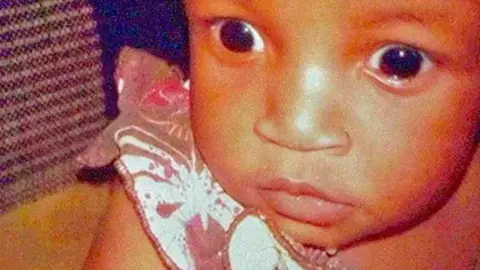

Samantha Pendo died three days after being admitted to intensive care
There are many victims of state terror in the 2017 post election violence who deserve to be compensated and they should be allowed to file their cases for compensation.
Samantha Pendo was brutally killed in her mother’s arm while she was holding her and being beaten by police officers and a teargas canister was thrown right into her face which was inches away from the officer who threw it.
“It is a scar that will never fade away,” Ms Achieng, a hotel worker, told the BBC about the death of six-month-old Samantha Pendo who died with a broken skull and of internal bleeding.

In the country we also have hundreds of victims of state violence including many killed during the Saba Saba demonstrations in 2023. Those demonstrations were led by Raila Odinga himself as the Azimio la Umoja coordinator. Many victims of state violence in those peaceful demonstrations were often beaten, teargassed and a big number of them were shot to death by the Kenya police.



Right now we have cases of Kenyans killed point blank by Kenya police officers and nothing exemplifies that more than the killing of Boniface Kariuki shot to death point blank in his face while he was just selling masks in Nairobi streets. Is Boniface Kariuki a victim of demonstrations? Of course not and his case is a terrifying example of outright police terrorism against Kenyans. The young man is gone forever but his family must be compensated and that is a big part of the job for the compensation team announced by President Ruto.

Killing of Boniface Kariuki and Boniface’s father Jonah Nyambura
Kenya mourns vendor killed in protests.

Susan Njeri, centre, mother of Boniface Kariuki, is supported by youth and family members after seeing his body, on July 11, 2025
How about Albert Ojwang’ who was violently strangled to death and his head smashed to pieces while in a police cell at Central Police Station on orders from high ranking state officers who are supposed to serve law and order in the country but in this case decided to commit one of the most heinous crimes in Kenya’s long record of state violence against the citizens of our country.
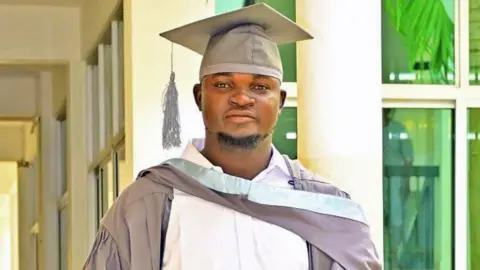

“My son died like an animal,” said Meshack Ojwang’ before breaking down in tears in front of journalists outside Central Police Station in Kenya’s capital, Nairobi.
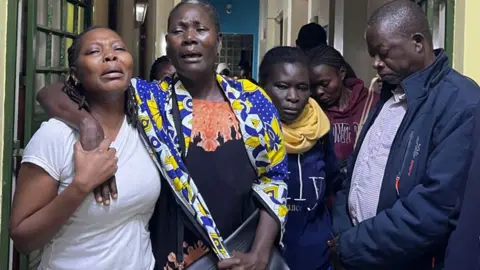
Albert Ojwang’s parents are devastated by the loss of their only son.
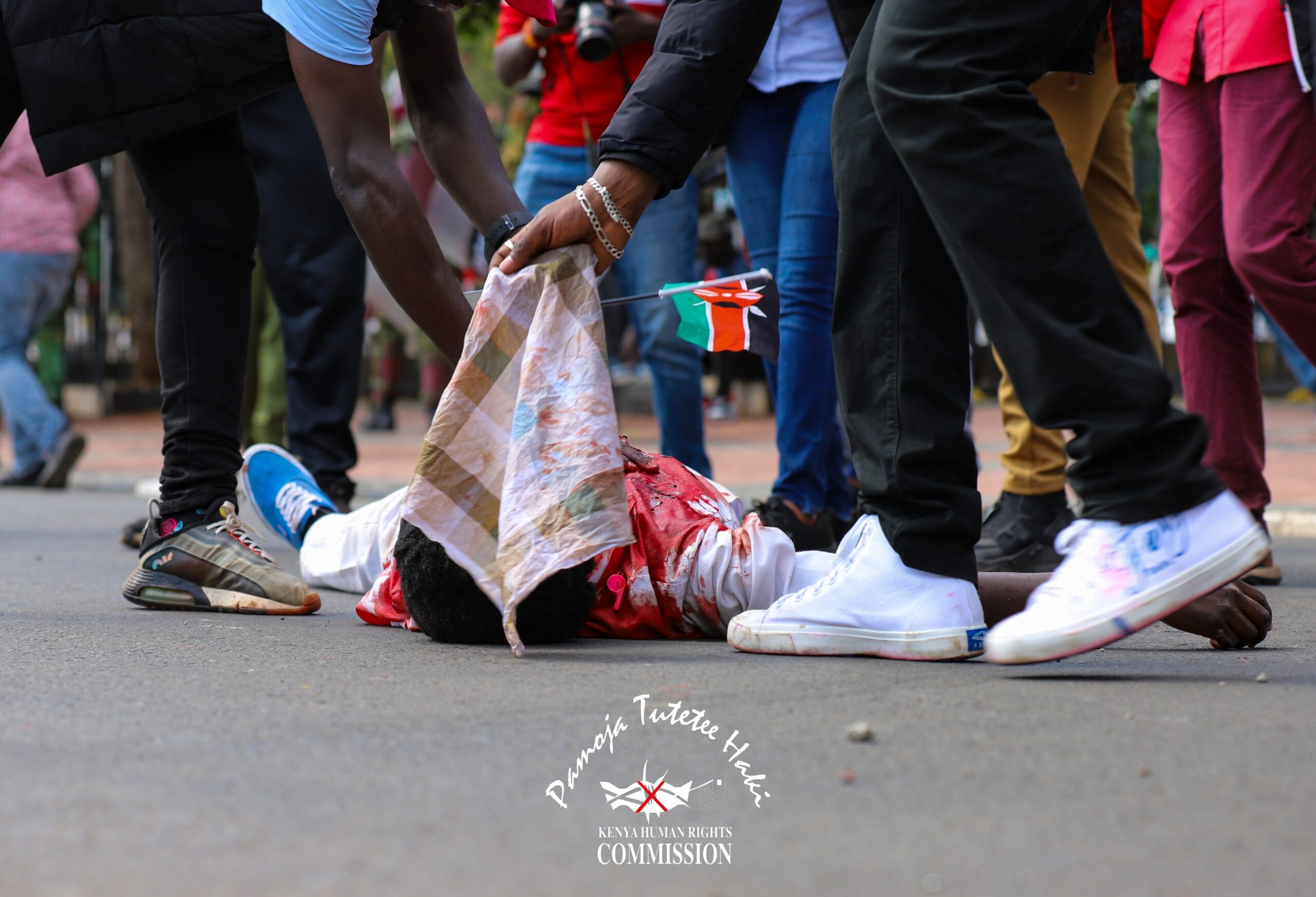
Police shot dead a peaceful protester outside parliament on June 25, 2024.
“We stand in solidarity and commend the Kenyan youth who came out in large numbers to defend our rights by rejecting the punitive Finance Bill, 2024. This is our constitutional right, per Article 37 of the Kenyan Constitution” said human rights activists who came to help.
Batons, tear gas, live fire, police brutality, that is what people face all the time during protests.

Police violence against young Kenyans went overboard during the anti-tax demonstrations in 2024 when people were being shot point at close range by cops in the streets and many got killed.

When the protests, dubbed “Occupy Parliament”, began the public outcry forced the government to withdraw some of the contentious proposals, including a 16% tax on bread and an annual 2.5% tax on vehicles, but it did not stem the anger of the mainly youthful protesters.
They focused on the government of President William Ruto. Since becoming president, he had introduced several new and unpopular taxes, which critics said stifled economic growth and lead to job losses.
Amnesty International accused the police of using excessive force to contain protesters, many of whom were arrested during the ant-tax demonstrations.
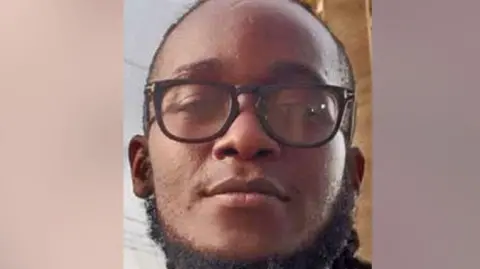
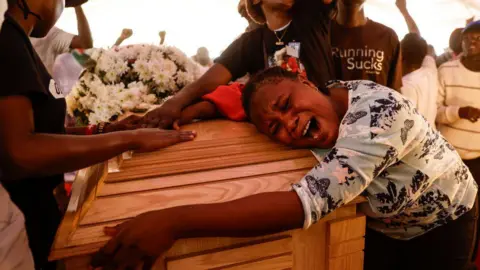
Rex Masai bled to death after being hit in the thigh.
His mother, Gillian Munyao, told journalists that her son joined protests after work and he was evading tear gas when he was shot in the city centre. “The only mistake Rex did was to defend the rights of everyone, we want justice for our child,” Ms Munyao added.
His father, Chrispin Odawa, said he was a “very calm, peaceful and obedient child”.
Mr Masai was taken to Bliss Hospital along Nairobi’s Moi Avenue where he was pronounced dead, officials there said.
“He was shot in the upper middle part of the thigh. It appears he bled to death before being brought to our facility,” a doctor told Kenya’s Nation news website.
“We will print posters with Rex’s face and name around Nairobi terming him as a hero. We will cover the burial expenses as well,” Hanifa Farsafi posted on X. “My heart is absolutely broken… but it was not in vain,” she added.
A total of 39 people were injured during those protests, with eight of among them in critical condition, according to the Kenya Red Cross.

Police were accused of using excessive force to contain the protesters

Some protesters were streaming the demonstrations on TikTok
The compensation announced by President Ruto will also address the terrible loses by many Kenyans whose businesses and shops were vandalized, burnt to the ground, looted and totally destroyed leaving many Kenyan business owners in a state of poverty.
Their losses of business supplies looted and buildings and other structures destroyed is a big part of the compensation framework announced by the president.
All these problems need to be addressed for the country to move forward without overburdening a section of Kenyans who lost their means to make a living.
Kenyans are yet to comprehend the full extent of the damage to peoples businesses as shops and buildings were dismantled with supplies and equipment looted. That damage has not been the focus of the demonstrations but they are certainly a central aftermath of what happened during and after demonstrations when groups we call goons but are actually just human beings like everybody just went into action and destroyed a lot of property and many peoples source of income.

Saba Saba: Traders clear out shops fearing a repeat of June 25
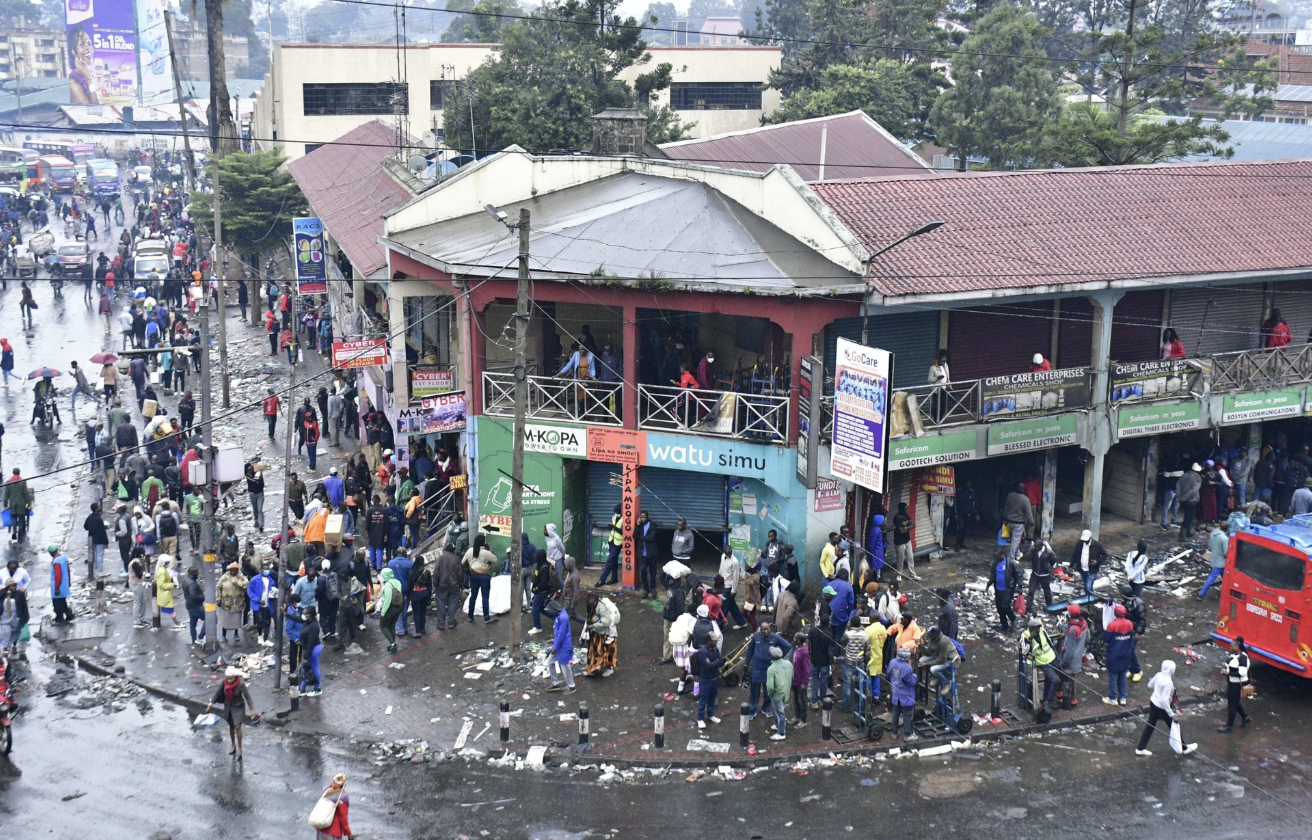
Businesses that were looted and set ablaze around the OTC area in Nairobi on June 25, 2025
Anxiety has gripped Nairobi’s business community, with traders scrambling to clear out their shops fearing a recurrence of the destruction and looting that marred the June 25 demonstrations.
In one case, the ministry of agriculture said that more than 7,354 bags of fertilizer, worth millions, were looted from a national depot during the protests.
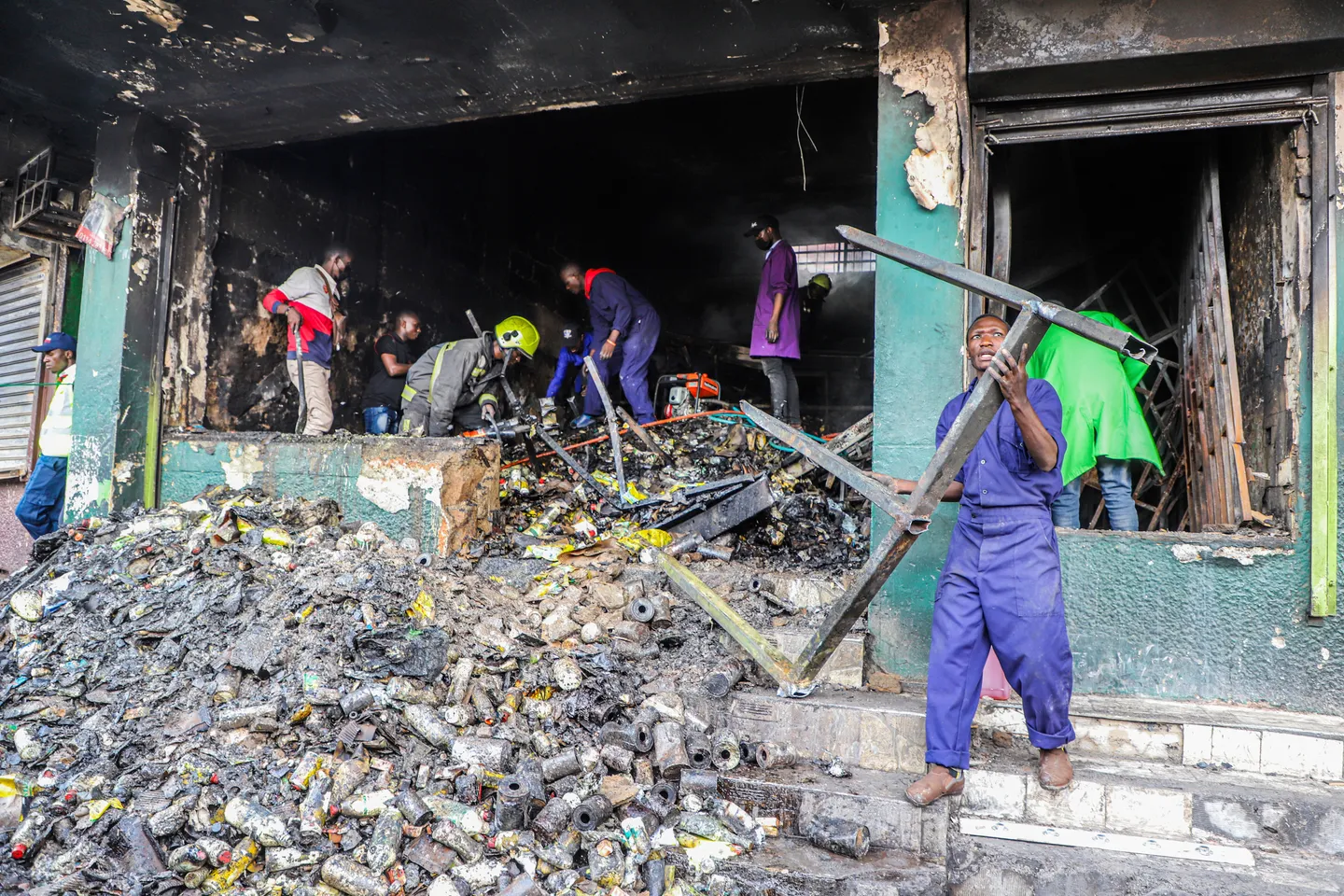
Business owners assess the damage to their vandalized shops in Nairobi on June 27, 2025
Day of reckoning: Protests leave businesses, roads in ruins (Photos)

Shelves lie empty and debris is scattered inside Naivas Supermarket in Nyeri following a chaotic night of unrest and looting that began on June 25, 2025 around 3 p.m.
Speaking during a meeting at Kamukunji Grounds in Nyeri town, the business leaders said they would collaborate with security officers to create a protective security ring around their businesses and ensure that criminals are contained.
“We are not opposed to demonstrations in this town. We know that Kenyans have a constitutional right to protest. However, we have observed that while Gen Z protests in the morning are peaceful, criminals take over after they leave and begin looting. That is what we need to address,” said Ibrahim Ndegwa, Chairman of the Nyeri Business Community.
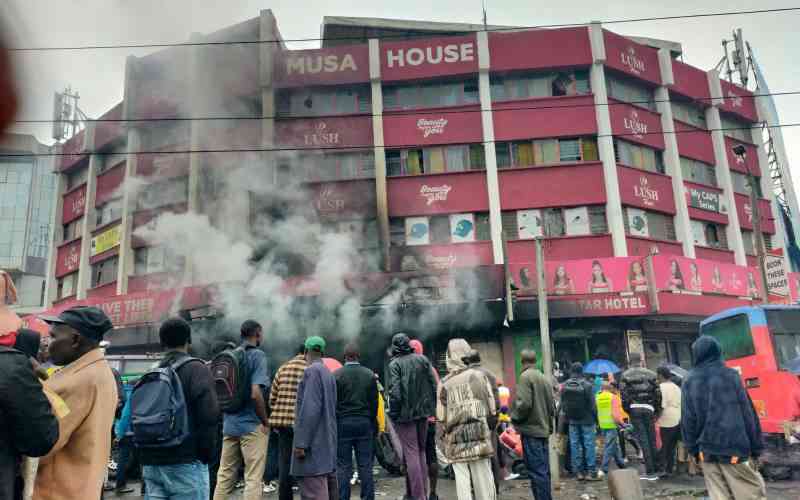
Musa House burning since June 25 after it was set on fire by unknown people who looted shops and left during June 25, 2025.
Saba Saba: How looting of businesses and burning of buildings.

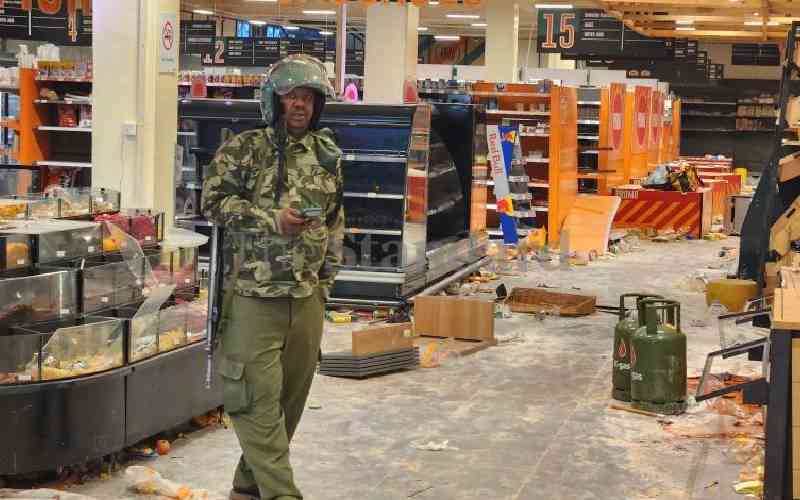
Pain and agony engulfed a number of towns across the country as traders began to pick up the pieces after the nationwide protests left a trail of destruction and loss of everything.
For now we need a clear plan on how the entire compensation framework will be carried out so that Kenyans who need to provide their personal information and details for compensation becomes a primary focus of the whole process.
The key component of making everything work should be to place total emphasis on the victims who need compensation and not any side shows which are bound to arise from time to time.
The leadership of the compensation plan will have to come with ways to work in cooperation with institutions already on the ground doing work with survivors and victims of state violence as they will also work with organizations that work with the business communities to get things done which will require a lot of ground work.

Kenyans are now waiting for the whole team under the leadership of Prof. Makau Mutua to come up with the planned framework of how the whole compensation process will work for Kenyans who desperately need the compensation as soon as possible.
There are going to be other Kenyans who have other issues regarding the compensation plan and they have every right to express those concerns but the most important voice Kenyans want to hear from will be the victims themselves in whichever way they can be directly involved in the process so it works for them.
We already have politicians like Kalonzo Muysoka talking about what the victims of police violence want and if you ask him which victims he meet with who told him what they want he will go blank because he has never met a single activist or anybody else who has faced police violence in his entire life.
Kalonzo himself in more than the forty years of his life in politics has never been arrested or shot by Kenyan police. What does he know other than trying so hard to climb on the backs of young Kenyans who put their lives to risk fighting for justice in their country while people like him look for the nearest media microphone to yell their tired politics.
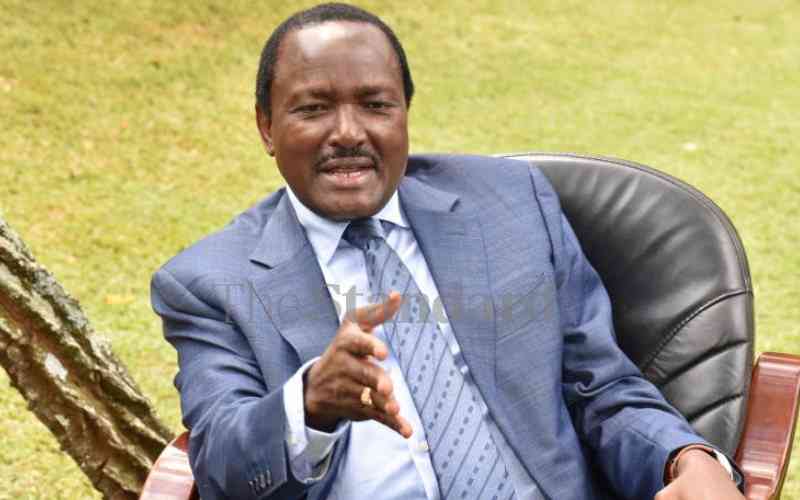
If Kalonzo Musyoka has been a victim of state violence let him take his case to the compensation team. Kenyans would like to see the actual plans and operational guidelines of the compensation team to get victims who must be principal partners directly involved in the whole process.
Leave the politicians to do their thing because the one thing they do best is to attack everything mainly to get some publicity. The victims of state violence must be the front and centre of the compensation team’s actions and activities going forward. The side shows can wait.
Whatever legal and constitutional actions that are needed for the compensation framework has to be done in the National Assembly and it was announced that a joint parliamentary team is meeting next week to discuss how to get everything done and the work begins.
There are some key components of the William Ruto Compensation machinery which need to be worked out right from the onset. If we take issues related to state violence against Kenyans, one big issue is how are those victims going to present their cases to the team. Will people come as individuals or do they need some representation and what would that look like.
Secondly on the case of victims going to present their cases, who will they be bringing their personal information to because the people the victims will present their cases to cannot be government employees of any kind. If the victims were to present their information relating to abuse from the state it cannot be to civil servants who serve the state.
The compensation team therefore will have to recruit there own staff to do the data collection from victims so that there is no antagonism between the victims and those who collect information from them and that will create an atmosphere where the victims do not have to put a fight just to provide information.
Will the victims of state violence be able to work with existing human rights organizations like Kenya Human Rights Commission (KHRC) and Kenya National Commission for Human Rights (KNCHR) which may have some information on the victims due to their work on the ground as the state abuse of citizens has been going on.
It might be necessary for the victims to form their own networks to do the same job because the well known human rights organizations as based in Nairobi but the compensation process will cover the whole country. Even in Nairobi there might be other networks in specific parts of the city.
Whatever the case the compensation team will have to have those working relations officially worked out so the victims know where to go and have places to get support if they need some help.
The other bit to mention here is that for people like myself who had to go to court to fight to be paid for years of torture and imprisonment is was a completely different relationship with the state and their agents.
As a Nyayo House torture victim going to court was a war with the state but the difference was that you needed a lawyer to go to court. It was our lawyers who presented our cases to court while the state denied everything, in fact for them Nyayo House was not a place of torture.
In our cases without the work of the human rights organizations we had no chance and would have just given up. The amount of information needed in the courts was impossible for us to provide. Many of us did not even know how many days we were in the water at Nyayo House because when you get out of that swimming pool you have no clue about anything and when you wake up you just sign papers presented to you and go to jail. I did not even know the day I was arrested in Mombasa where I was working, but I knew it was not the end of the month because I was broke and I could remember that very well.
In this compensation case it cannot be a fight between the state and the victims because the state by establishing the compensation framework has acknowledged that it has been violating the rights of the citizens and is now willing to compensate them for that abuse.
We also do not want something like what happened at the Truth and Reconciliation Commission ( (TRC) in South Africa. Bishop Desmond Tutu the chair of that commission summarized it perfectly.
Bishop Tutu said that during the hearings the victims of apartheid violence and economic deprivation came in hungry with hardly any clothes to wear many from places like Soweto and they left the same way. On the other hand he said the abusers, the Whites who were in power during apartheid, came to the hearing with their limousines and well dressed looking robust and they left the same way. In other words nothing changed for the victims of apartheid.
The Kenya Truth and Justice Commission (TJRC) set up by President Mwai Kibaki in 2009 was even more pathetic than the one in South Africa. Reading the recommendations from Kenya’s TJRC will make you cry. They talk about the president apologizing to victims of post-election violence in 2007/8 like the survivors of those horrors at that time would eat an apology and even that little apology never came from anybody.

The TJRC Report was presented to President Uhuru Kenyatta in 2013 and he never even bothered to present it to Parliament as was required by the law that enacted the TJRC. For what we know President Uhuru Kenyatta may just have thrown the whole report into the garbage bag at State House, assuming he didn’t get it flashed down the toilet in that big house. Nobody has ever heard even a word from our political leaders about that whole spectacle of Kenya’s TJRC process and report.
As the compensation process goes on, President William Ruto needs to deal with the issue of police killing Kenyans in the streets and make every effort to bring that to an end. I was talking to my friend back home who is a human rights activist and he was in Kajiado where they were having a rally as we talked. I wanted to know how things are going on with this compensation plan for dead activists.
My friend told me that some of the young Kenyans are now telling their parents that when they go for demonstrations they may not come back but their parents will get a few million bucks instead if that is okay for them. That is a scary message President William Ruto and his government has to deal with. No amount of money can buy the lives of our young people who are getting killed in demonstrations as of right now.
